Select correct adsorption isobars for chemisorption and physisrption respectively (where xm = extent of adsorption , T = temperature )
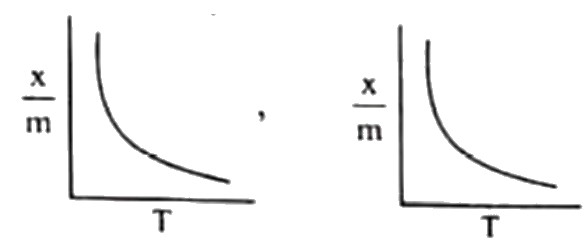
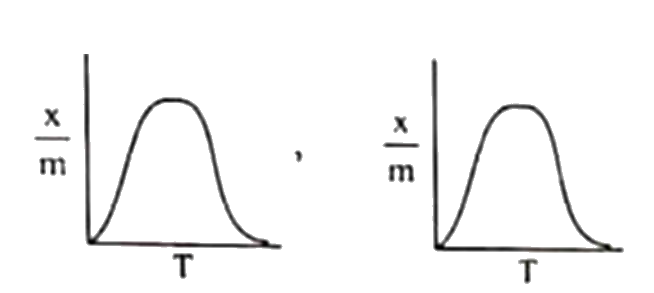
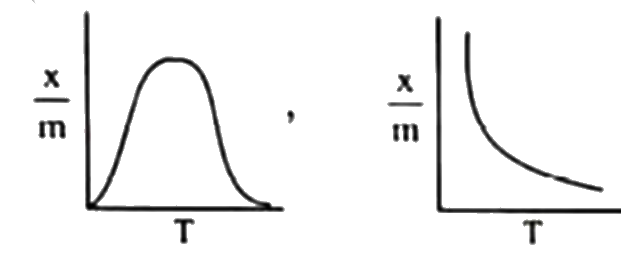
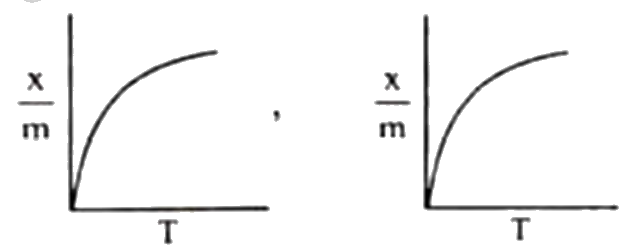
The correct Answer is:C
To solve the question regarding the correct adsorption isobars for chemisorption and physisorption, we will analyze the characteristics of each type of adsorption and how they relate to temperature and the extent of adsorption (x/m).
1. Understanding Adsorption:
- Adsorption is the process where atoms, ions, or molecules from a gas, liquid, or dissolved solid adhere to a surface.
- The extent of adsorption is represented as xm, where x is the mass of the adsorbate and m is the mass of the adsorbent.
2. Types of Adsorption:
- Physisorption: This is a physical process where weak van der Waals forces are involved. The bonds formed are weak and can easily be broken.
- Chemisorption: This involves the formation of strong chemical bonds between the adsorbate and adsorbent. It requires higher energy and is typically irreversible.
3. Behavior with Temperature:
- For Physisorption:
- As the temperature increases, the extent of adsorption (xm) decreases. This is because the increased kinetic energy allows the adsorbate molecules to overcome the weak van der Waals forces, leading to desorption.
- The graph will show a downward trend as temperature increases.
- For Chemisorption:
- Initially, as temperature increases, the extent of adsorption (xm) increases because higher temperatures provide the necessary energy to overcome the activation energy barrier for bond formation.
- However, after reaching a certain point, the extent of adsorption will start to decrease as the bonds may begin to break due to excessive energy, leading to desorption.
- The graph will show an initial increase followed by a decrease.
4. Conclusion:
- The correct adsorption isobars for chemisorption will show an initial increase followed by a decrease with temperature, while physisorption will show a continuous decrease with increasing temperature.
- Therefore, the correct answer is:
- Chemisorption: Increases then decreases with temperature.
- Physisorption: Decreases with temperature.
Final Answer:
- The correct adsorption isobars are:
- Chemisorption: Increases then decreases.
- Physisorption: Decreases.
- Adsorption is the process where atoms, ions, or molecules from a gas, liquid, or dissolved solid adhere to a surface.
- The extent of adsorption is represented as xm, where x is the mass of the adsorbate and m is the mass of the adsorbent.
- Physisorption: This is a physical process where weak van der Waals forces are involved. The bonds formed are weak and can easily be broken.
- Chemisorption: This involves the formation of strong chemical bonds between the adsorbate and adsorbent. It requires higher energy and is typically irreversible.
- For Physisorption:
- As the temperature increases, the extent of adsorption (xm) decreases. This is because the increased kinetic energy allows the adsorbate molecules to overcome the weak van der Waals forces, leading to desorption.
- The graph will show a downward trend as temperature increases.
- For Chemisorption:
- Initially, as temperature increases, the extent of adsorption (xm) increases because higher temperatures provide the necessary energy to overcome the activation energy barrier for bond formation.
- However, after reaching a certain point, the extent of adsorption will start to decrease as the bonds may begin to break due to excessive energy, leading to desorption.
- The graph will show an initial increase followed by a decrease.
- The correct adsorption isobars for chemisorption will show an initial increase followed by a decrease with temperature, while physisorption will show a continuous decrease with increasing temperature.
- Therefore, the correct answer is:
- Chemisorption: Increases then decreases with temperature.
- Physisorption: Decreases with temperature.
- The correct adsorption isobars are:
- Chemisorption: Increases then decreases.
- Physisorption: Decreases.
Topper's Solved these Questions
Similar Questions
Knowledge Check
Select correct adsorption isobars for chemisorption and physisorption respectively :
(where xm= extent of adorption, T= temperature )A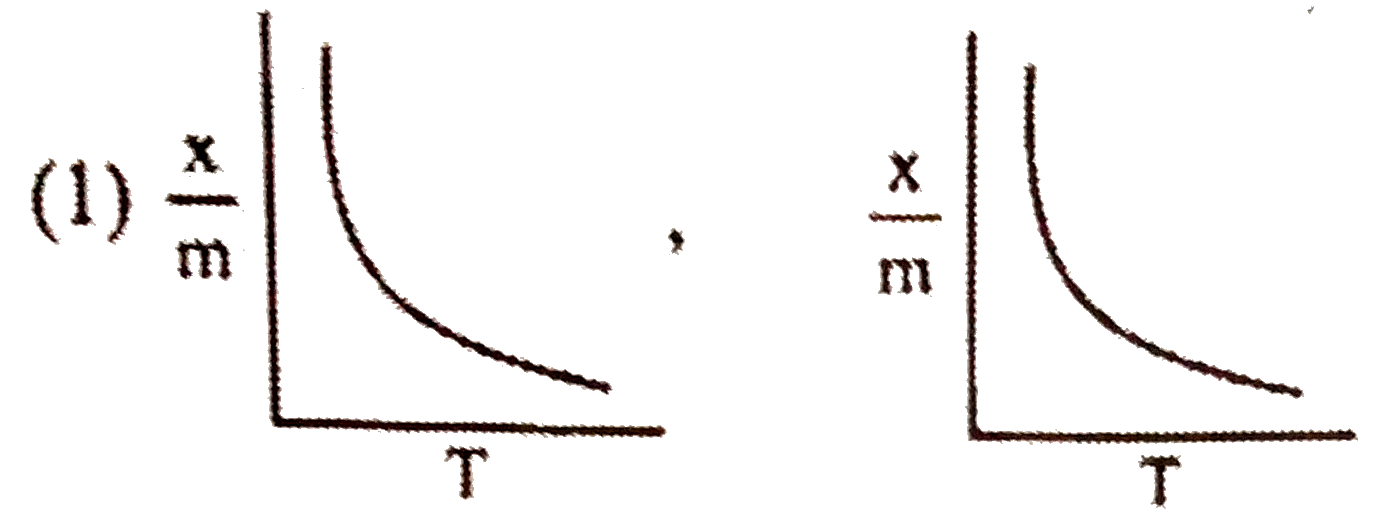 B
B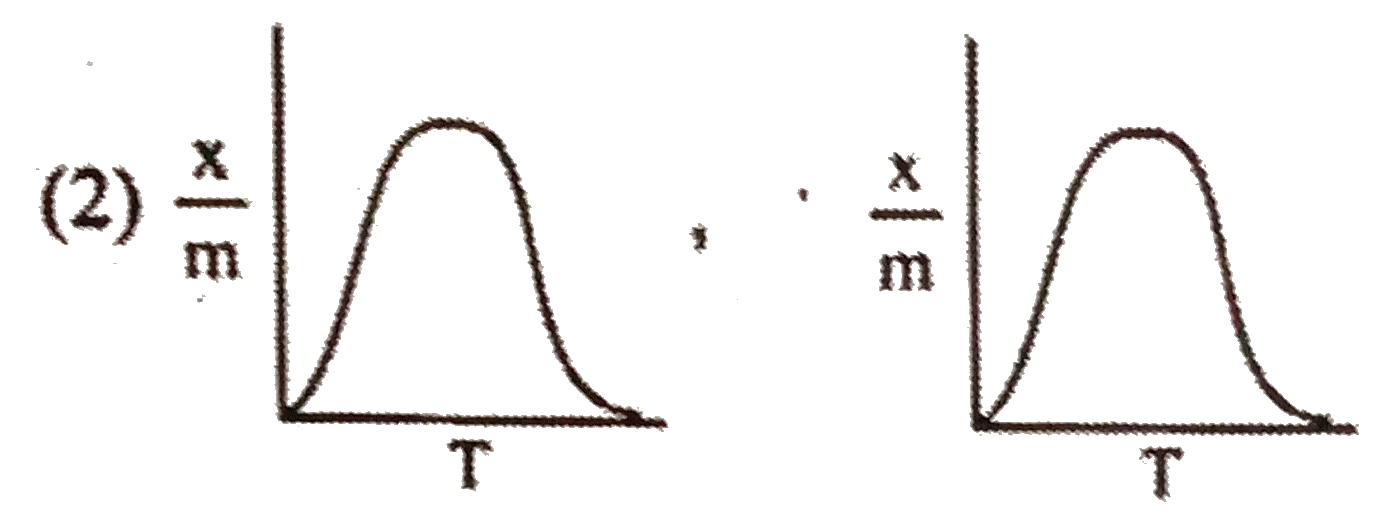 C
C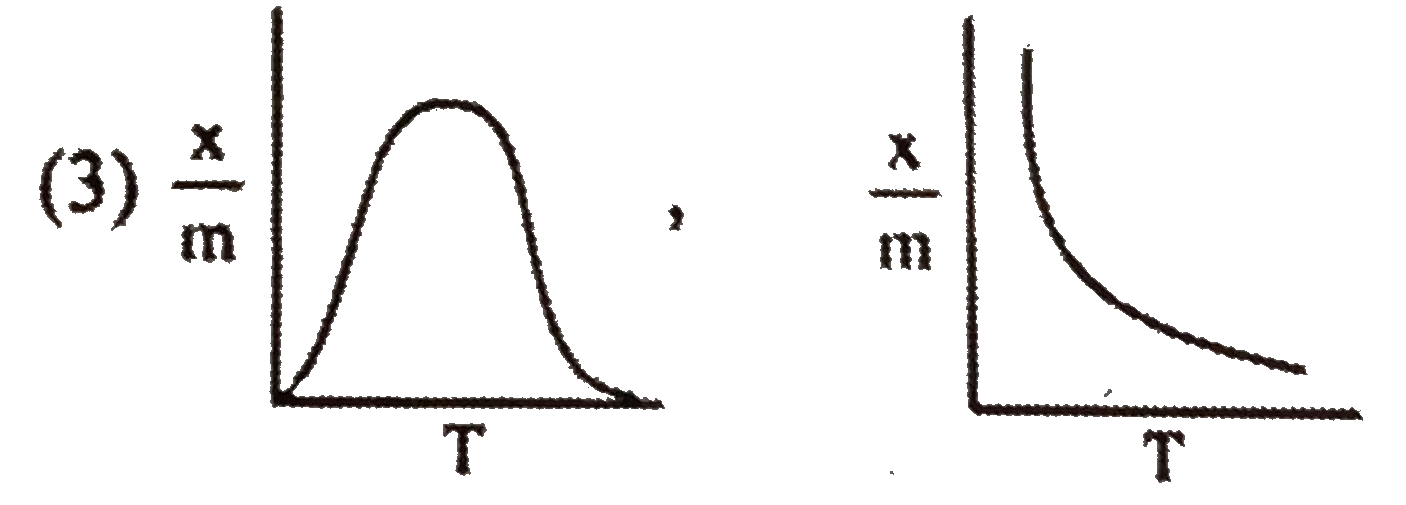 D
D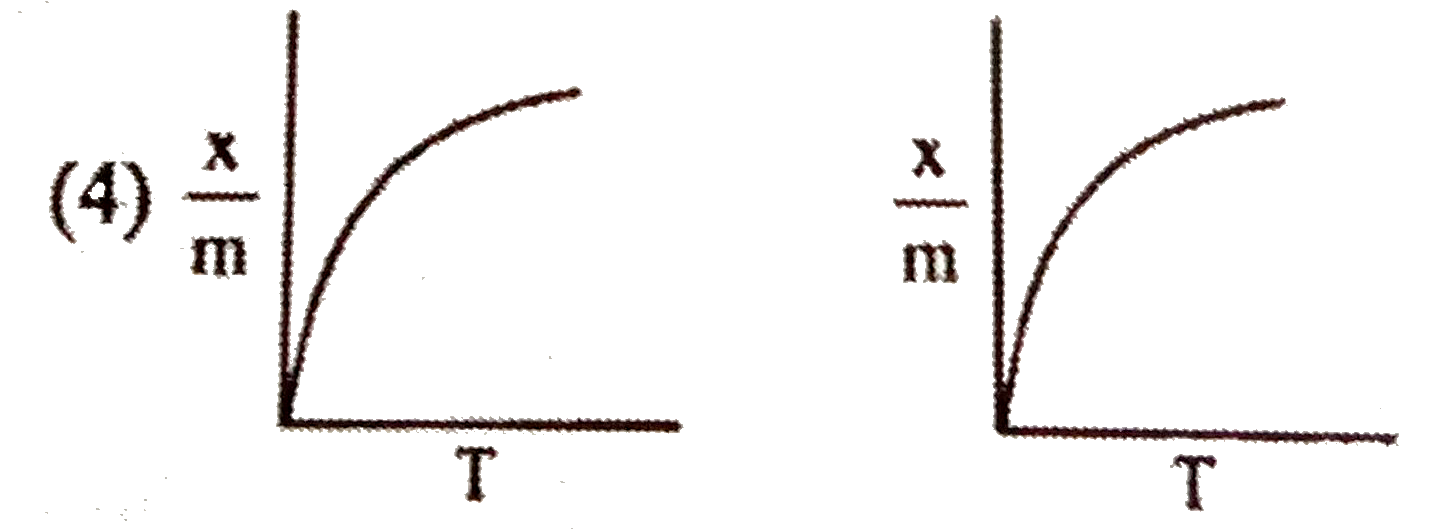
select correct absorption isobars for chemisorption and physisorption respectively ,
(where xm = extent of adsorption , T = temperature )A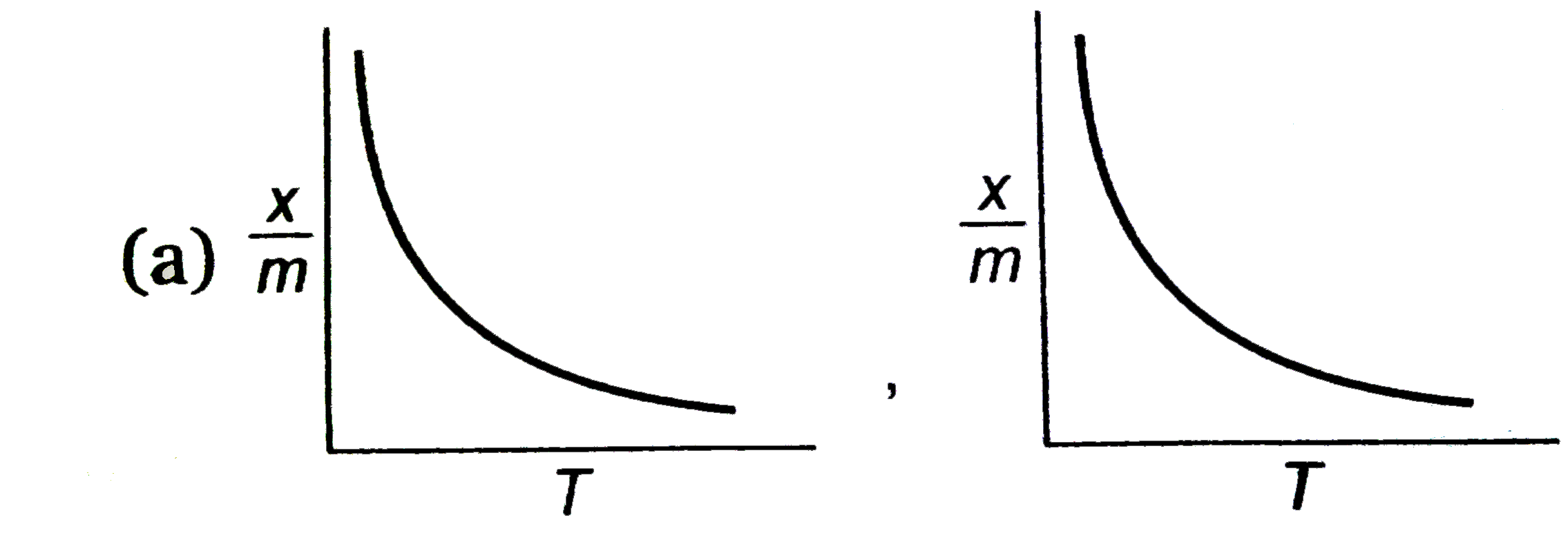 B
B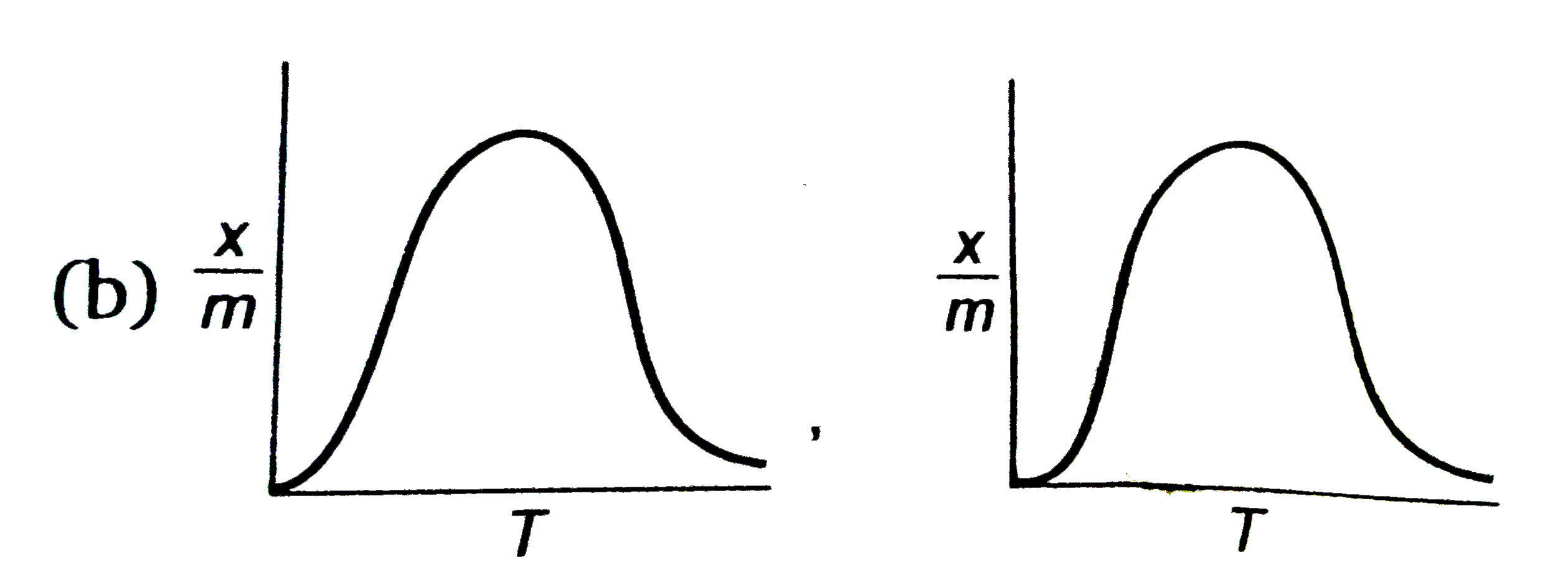 C
C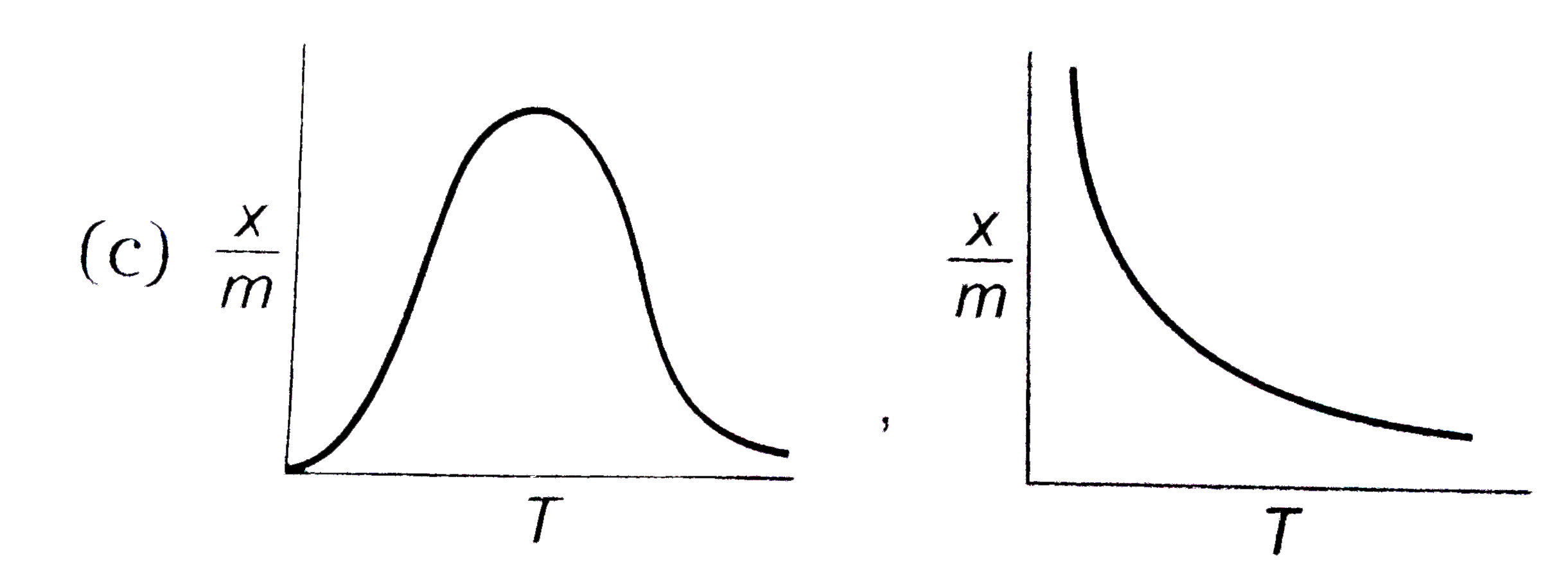 D
D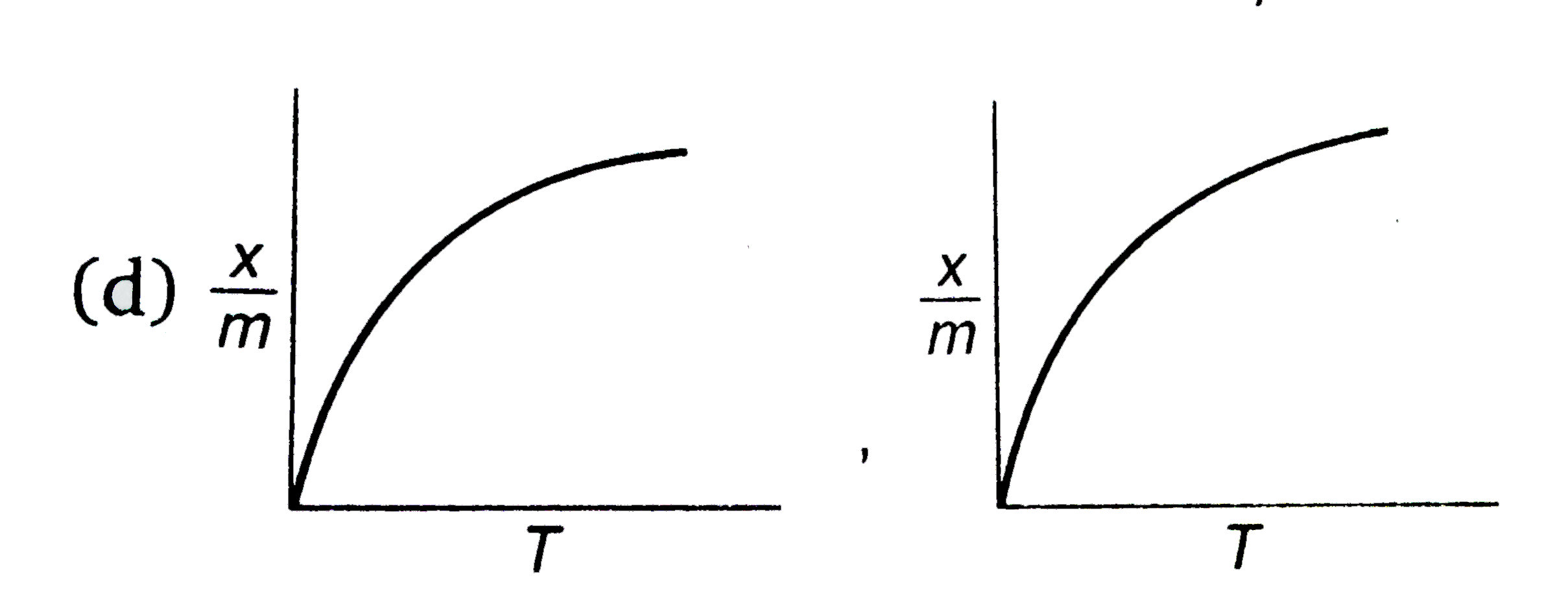
select correct absorption isobars for chemisoption and physisoption respectivly ,
(where xm = extent of adsorption , T = temperature )A B
B C
C D
D
Which plot is the adsorption isobar for chemisorption?
View SolutionWhich of the plots is adsorption isobar for chemisorption?
View SolutionWhich plot is the adsorption isobar for chemisorption where x is the amount of gas adsorbed on mass m (at constant pressure) at temperature T -
View SolutionWhich plot is the adsorption isobar for chemisorption where x is the amount of gas adsorbed on mass m (at constant pressure at temperature T ?
View SolutionWhich plot is the adsorptoion isobar for chemisorption where m (at constant pressure ) at temperature T ?
View Solution
